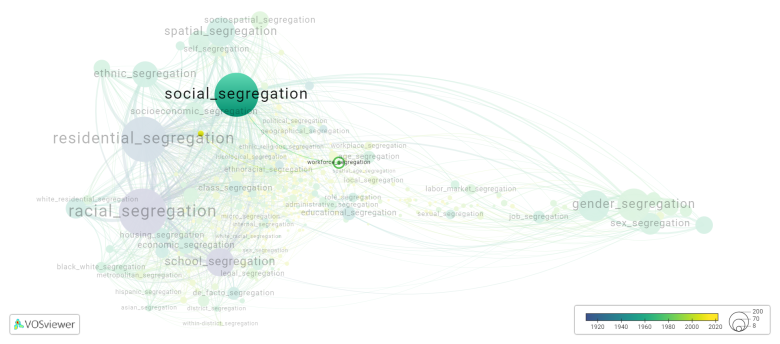Workforce segregation
Date and country of first publication[1]
1989
United States
Definition
Workforce segregation refers to the division of employees based on characteristics such as race, gender, age, or disability. It is the practice of separating individuals into different work roles, departments, or positions based on their membership in a particular group.
Historically, workforce segregation has been most commonly associated with racial segregation, where individuals of different races are separated into different job categories or denied access to certain industries or professions. This form of segregation has been a significant issue throughout history, most notably during the period of racial discrimination in the United States known as Jim Crow segregation.
Gender segregation is another prevalent form of workforce segregation, where certain professions or industries are predominantly dominated by one gender. For example, nursing and teaching have traditionally been seen as female-dominated professions, while engineering and technology fields have been male-dominated. This form of segregation often results from social norms and stereotypes surrounding gender roles.
Age segregation can also occur in the workforce, where individuals of different age groups are separated into different job roles or departments. Older workers may be concentrated in certain industries or positions, while younger workers may be more likely to be found in others. This can be due to factors such as experience, technology adoption, or generational differences.
Workforce segregation is generally seen as a negative phenomenon, as it can contribute to inequality, discrimination, and limited opportunities for certain individuals or groups. Efforts to address workforce segregation often involve promoting diversity and inclusion in hiring practices, equal opportunity policies, and creating inclusive workplaces where individuals are judged based on their skills, qualifications, and abilities rather than their demographic characteristics.
See also
Related segregation forms
Workforce segregation is frequently discussed in the literature with the following segregation forms:
social segregation, gender segregation, residential segregation, economic residential segregation

This visualization is based on the study The Multidisciplinary Landscape of Segregation Research.
For the complete network of interrelated segregation forms, please refer to:
References
Notes
- ↑ Date and country of first publication as informed by the Scopus database (December 2023).
Workforce segregation appears in the following literature
La Croix S.J., Fishback P.V. (1989). Firm specific evidence on racial wage differentials and workforce segregation in Hawaii's sugar industry. Explorations in Economic History, 26(4), 403-423. https://doi.org/10.1016/0014-4983(89)90016-8
Shirlow P. (2006). Measuring workforce segregation: Religious composition of private sector employees at individual sites in Northern Ireland. Environment and Planning A, 38(8), 1545-1559. https://doi.org/10.1068/a3840
Alksnis C., Desmarais S., Curtis J. (2008). Workforce segregation and the gender wage gap: Is "women?s" work valued as highly as "men?s"?. Journal of Applied Social Psychology, 38(6), 1416-1441. https://doi.org/10.1111/j.1559-1816.2008.00354.x
D'Amico D., Pawlewicz R.J., Earley P.M., McGeehan A.P. (2017). Where are all the black teachers? Discrimination in the teacher labor market. Harvard Educational Review, 87(1), 26-49. Harvard University.https://doi.org/10.17763/1943-5045-87.1.26
van Ham M., Uesugi M., Tammaru T., Manley D., Janssen H. (202). Changing occupational structures and residential segregation in New York, London and Tokyo. Nature Human Behaviour, 4(11), 1124-1134. Nature Research.https://doi.org/10.1038/s41562-020-0927-5
